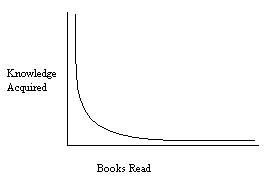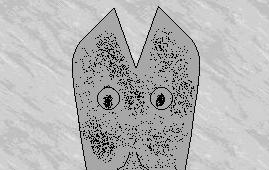Class…class? CLASS!
The proper relationship between students and teachers is one of awe tinged with fear. When I enter the classroom, I expect all conversation to cease. I leave the sacrifice of small animals to your discretion.
This is Humanities 257m – Introduction to Semidiotics. If you entered the room expecting a class on The Art and History of Ferret Strangling, please take this opportunity to leave. Remember: your therapist gets paid whether you show up for your sessions or not.
This discipline is known as semidiotics. SEM-EE-ID-EE-OTICS. It is pronounced as though it contains a double “i.” I know that it does not contain a double “i” – such is the wonder of the English language. Semidiotics – SEM-ID-EE-OTICS – sounds like an explosive in a poorly researched spy novel. That pronunciation will not be tolerated in this classroom. Should any student mispronounce the word in my presence, he or she will have five percentage points removed from his or her final grade…if I remember who you are long enough to get to my master class list. Do not abuse my desire to limit my interactions with…students. Three years ago, a student mispronounced semidiotics in my office while I had the master class list out on the desk in front of me.
It happens.
My name is Ulvaes Blunderson. Blunder-son. Not Blunders-on. Since I am heartrendingly averse to taking questions, the issue should never arise. However, mispronouncing the name of somebody who holds your future in his hands is never a good idea. Do you really want that art gallery curator’s job, or do you want your Kraft Dinner to be paid for by the last of your unemployment insurance? Decide for yourself and pronounce accordingly.
When it comes to the subject matter of the course, assume I’ve forgotten more about semidiotics than you will ever have the fortune to know. I am the author of Exterminate All Rational Thought: Meaninglessness in Everyday Communication, and the editor of What You Don’t Know Can Ill You: A Semidiotics Reader. Those keeners among you who have actually read the course outline will know that these two texts constitute the required readings for the course.
My Teaching Assistant this year will be Monique Erasmus. Monique is just about to enter that unique torture chamber known as the PhD committee process. Her groundbreaking work on “Regendering the Genderless Gender” has already added immensely to our understanding of meaningless communication processes in gender studies. Her paper, “Genitals Do Not Explain, Nor Orgasms Excuse,” left them speechless at last year’s Modern Language Association conference, which can only be a good thing. She will one day be an academic superstar – bask in her reflected glory while you can.
If you have any questions about the course, feel free to ask Monique – her contact information is on the course Web page. While I am always delighted to personally help students in any way I can, my contact information has been placed on a random Web page on the University site…and I will immediately fail any student who finds it and actually tries to use it.
Alright, then. If there’s nothing el – ah. For those of you who chose your courses by throwing darts at the calendar rather than actually reading the course descriptions, semidiotics is the science of finding sense in nonsense. It is a multidisciplinary approach to communications that draws upon the finest scholarship to show how meaninglessness can be – and often is – mistaken for profundity. It’s not so much the deconstruction of master narratives that we are concerned with, as the bizarre construction of a non-narrative master discourse.
Clear as mud? Good. It is only when we know the depths of our ignorance that we can make a start in gaining knowledge. And, if nothing else, semidiotics is about the depth of our ignorance.
I have taught Introduction to Semidiotics for almost 15 years, now, and invariably some student in the class asks: “How many books do I really need to understand the main argument in a field?” Rather than wait for the question to arise, I have decided to address it at the outset in the undoubtedly vain hope that we can dispense with it entirely and move on to more important issues.
The answer is: three and a half.
Now, had you been properly inculcated with sufficient respect for those who are clearly your intellectual superiors, you would simply accept that number and we could move on to the meat of the course. Unfortunately, at this point another student invariably asks how I arrived at that number – I see a couple of likely skeptics in the third row alone.
So.
Let us assume that a student comes to a subject with zero knowledge. A clean slate. Tabula rasa. Judging by the blank looks on many of your faces, this is a fair assumption to make. The first book the person reads on the subject will, therefore, contain knowledge that approaches 100 per cent – let us say 95 per cent of it will be new. Why not all of it? The reader will need to have some prior knowledge – of the language, if nothing else – to be able to read the book in the first place!
Following this line of reasoning, how much will you learn from the second book on the subject? Well, let us consider what actually goes into most academic texts. Thomas Kuhn, in The Structure of Scientific Revolutions, argues that most research consists of tackling small problems with existing theories. He calls this “normal science.” (This is in opposition to what is found in old Far Side comic strips, which are about “abnormal science,” and what can be found in old John Hughes movies, which are about “weird science.”) For our purposes, it is important to note that most texts most of the time offer the least amount of original information that can be successfully passed by publishing company editors.
How can we quantify exactly how much – or little – information an academic text will contain? Marshall McLuhan, in the preface to the second edition of Understanding Media: The Extensions of Man, claimed that the book was not well received when it was first published because most texts contain 20 per cent original material and 80 per cent existing material, and that he had reversed this formula, his book containing 80 per cent original material and only 20 per cent retreads. We may quibble with his self-assessment, but his figures seem reasonable enough. After all, McLuhan was, in his lifetime, a great producer of semidiotic material. In fact, he would be considered the Patron Saint of semidiotics…if we indulged in such immature pastimes.
What does this mean? The second book on a subject will contain only 20 per cent original material. The third book on a subject will contain only 20 per cent of 20 per cent original material. And so on. Putting this all together, you can see from the first slide that, if we place books read on the –

MONIQUE! That’s the wrong carrel! Can you – can you – please! Sorry about that. That slide is from a presentation I’ll be giving at the Third Annual Semidiotics Bienniale on “Enema of Education: Colon Use in Academic Paper Titles: The Correlation Between Punctuation and Fatuousness: a Literature Review.” Don’t feel bad if you don’t understand the title – the paper will be required reading for my graduate seminar. Now, ah. That’s better.

As you can see from the first slide, if we place books read on the x axis and knowledge acquired on the y axis, we create an asymptotic curve which quickly approaches zero. Not an asymptomatic curve. Not an Assyrian curve. Not an Assumption curve. An asymptotic curve. If you are unfamiliar with the term, I understand that Mathematics for Dummies is available in the bookstore for an outrageous fee – knowledge is dear.
Informed opinion differs on the precise number of books one needs to read to be well-informed on a subject, but various theories generally converge on a figure between three and four, so, for our purposes, three and half will suffice. The question then arises: how do you choose which books to read to optimize your minimal reading? We’ll be looking at that question in depth in the second year of the course.
Oh, dear. There seems to be some time left in the lecture. Do any of you have…questions? Ahh…you? Yes, you in the Mickey Mouse t-shirt – you have a question?
QUESTION: Ah, yes. Professor Blu – uhh…Professor. Interesting lecture. I was, uhh, wondering if you were the Professor Blu – uhh…the professor who was involved in some sort of, uhh, sports scandal a few years ago.
ANSWER: As a matter of fact, no. That would have been my brother, Benny. Brilliant mind but, alas, not very disciplined. The last any of the family heard from him, he was teaching at a small community college in the wastes of Scarborough. For those of you who believe that researching the lives of your professors will help you find favour with them, let this stand as a counter-example. Oh, and, son, Mickey Mouse is definitely not your colour.
Well, then, if there’s nothing else, I – oh, put your hand down. I know there’s always something else. But, we’re out of time, so I’ll see you all next week.


